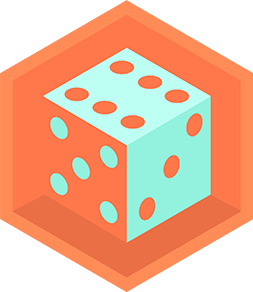Customize Your Dino on Scratch!
Design and program a customizable dinosaur in Scratch: change colors and costumes, add simple movement and sounds, and test interactive behaviors.



Step-by-step guide to Customize Your Dino on Scratch
Step 1
Open Scratch and start a new project by clicking "Create".
Step 2
Delete the cat sprite by right-clicking it and choosing "delete".
Step 3
Add a dinosaur sprite by clicking "Choose a Sprite" and pick a dino or click the paintbrush to draw your own.
Step 4
Make at least three different dinosaur costumes by duplicating the dino costume and using the fill color tool to change each one.
Step 5
Add a script so that when you click the dinosaur it switches to the next costume using "when this sprite clicked" and "next costume".
Step 6
Add a script for the right arrow so it points right and moves 10 steps while switching costumes quickly to make a walking look.
Step 7
Add a script for the left arrow so it points left and moves 10 steps while switching costumes quickly to make a walking look.
Step 8
Add a "when space key pressed" script that plays a roar sound using "play sound [roar]" so your dino can make noise.
Step 9
Add a "when green flag clicked" script that sets the dinosaur back to a starting costume position and size.
Step 10
Click the green flag to start your project and see everything reset.
Step 11
Press the right arrow now to test the right movement and walking animation.
Step 12
Press the left arrow now to test the left movement and walking animation.
Step 13
Press the space key now to test the roar sound.
Step 14
Save your Scratch project with a fun name like "Custom Dino" using the Save button.
Step 15
Share your finished creation on DIY.org
Final steps
You're almost there! Complete all the steps, bring your creation to life, post it, and conquer the challenge!


Help!?
What can we use if we can't find a dinosaur sprite or the roar sound in Scratch?
If you can't find a dino sprite use Choose a Sprite → paintbrush to draw your own or upload an image, and if you don't have a 'roar' sound use the Sound library or record one with your microphone and add it in the Sound tab.
My dino doesn't look like it's walking when I press the right or left arrow — what should I check?
Check that you duplicated the dino costume at least three times and that your right/left arrow scripts both point in the correct direction (point in direction 90 or -90) and include repeated 'next costume' calls while moving (for example loop 'repeat 4' with 'next costume' plus 'move 10 steps' or add short 'wait 0.08' between switches).
How can I adapt this activity for different age groups?
For younger kids simplify by using just two costumes and pre-made dinosaur sprites with an adult placing the 'when key pressed' blocks, while older kids can make extra costumes with the fill color tool, add variables for speed, and use broadcasts to sync the roar and animation.
What are some ways to extend or personalize the Custom Dino project?
Extend it by adding a stage backdrop, multiple dinosaur sprites that respond to broadcasts so the 'when space key pressed' roar plays for all dinos, include a score or speed variable, then save and share your project as 'Custom Dino' on DIY.org.
Watch videos on how to Customize Your Dino on Scratch
Scratch Tutorial | T-Rex Run Game |Scratch 3.0 Game Tutorial | Chrome Dino Game Scratch |Scratch 3.0
Facts about Scratch programming for kids
🦕 Dinosaurs first appeared about 230 million years ago — a cool ancient inspiration for your customizable dino!
🎭 In Scratch, each sprite can have multiple "costumes" so you can swap colors, poses, or outfits instantly.
🔊 Scratch lets you record or import sounds so your dino can roar, chirp, or play custom effects when it moves.
🕹️ Simple blocks like "move 10 steps", "when this sprite clicked", and "if on edge, bounce" make interactive behavior easy.
🧑💻 Scratch was created at the MIT Media Lab to teach kids coding using colorful drag-and-drop blocks.
How do you customize a dinosaur on Scratch?
What materials do I need to customize a dinosaur on Scratch?
What ages is this activity suitable for?
What are the benefits of customizing a dinosaur on Scratch?


One subscription, many ways to play and learn.
Only $6.99 after trial. No credit card required



